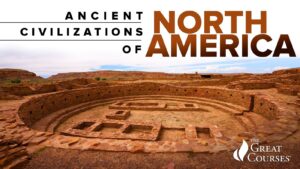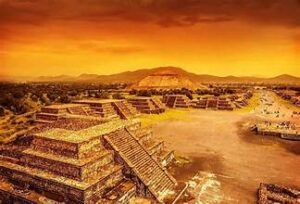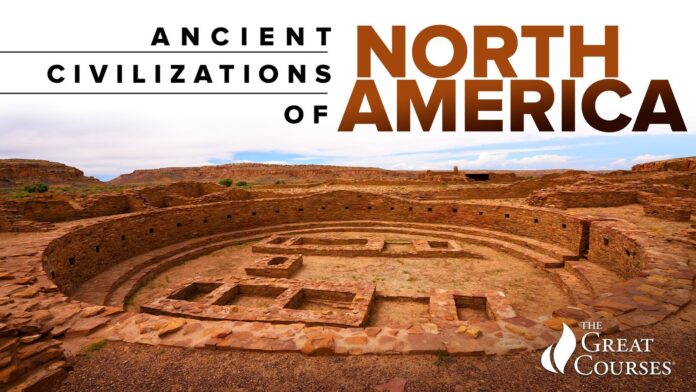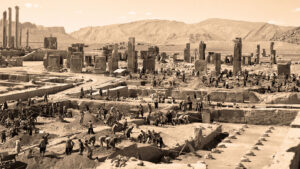The quest to uncover lost civilizations is one of the most fascinating aspects of archaeology and history. As we step into 2024, new discoveries continue to reshape our understanding of ancient cultures that vanished long ago. This article delves into the top five lost civilizations that have recently come into focus, revealing what these ancient societies can teach us about our past and ourselves.
1. The Lost City of the Pyramids: A New Discovery in the Amazon
A Hidden Civilization Revealed
In recent years, researchers have uncovered evidence of a lost civilization deep within the Amazon rainforest, known for its large pyramid structures. This discovery, made using advanced LiDAR technology, has revealed a network of cities and complex structures previously unknown to historians. The civilization, believed to have thrived around 1000 CE, showcases an intricate society with sophisticated urban planning and advanced agricultural techniques.
What We Learn About Their Society
The lost city of the pyramids sheds light on the advanced engineering skills of pre-Columbian societies. The presence of pyramids, once thought to be unique to Mesoamerica and Egypt, demonstrates that large-scale architectural achievements were also present in the Amazon. Additionally, the sophisticated agricultural methods, including the use of raised fields and irrigation systems, reveal a deep understanding of sustainable farming long before modern practices.
2. The Minoan Civilization: New Insights from Recent Excavations
Rediscovering an Ancient Power
The Minoan civilization, known for its impressive palaces and advanced maritime trade, has long fascinated historians. Recent excavations on the island of Crete have uncovered new artifacts and structures that offer fresh insights into this ancient society. Discoveries such as intricate frescoes and advanced pottery techniques provide a glimpse into the daily life and cultural practices of the Minoans.
Understanding Their Influence
The new findings emphasize the Minoan’s role as a significant power in the Mediterranean, influencing surrounding cultures through trade and innovation. The sophistication of their art and architecture reflects a society that valued aesthetics and technological advancement. These revelations help us understand the connections between ancient civilizations and their impact on the development of Western culture.
3. The Hittite Empire: Unveiling the Lost Capital
A Kingdom of Power and Influence
The Hittite Empire, once a formidable force in Anatolia, has been the subject of numerous archaeological studies. Recent discoveries have pinpointed the location of their long-lost capital, Hattusa, which was buried under layers of sediment and time. Excavations have unearthed monumental structures, including temples and fortifications, that highlight the Hittite’s military prowess and architectural achievements.
Insights into Their Society
The unearthing of Hattusa provides a wealth of information about the Hittites’ administrative and military strategies. The city’s layout, with its impressive walls and strategically placed gates, reflects a sophisticated approach to defense and urban planning. Additionally, the discovery of administrative tablets offers a glimpse into the bureaucratic systems that supported their empire.
4. The Indus Valley Civilization: Breakthroughs in Ancient Urban Planning
Unearthing a Forgotten Civilization
The Indus Valley Civilization, known for its advanced urban planning and well-organized cities, has recently seen significant breakthroughs. New excavations in the ancient cities of Harappa and Mohenjo-Daro have revealed new insights into their urban infrastructure. The discovery of advanced drainage systems and standardized brick sizes showcases the complexity of their city planning.
Revealing Their Legacy
The Indus Valley Civilization’s focus on urban sanitation and infrastructure provides valuable lessons for modern city planning. The sophisticated drainage systems and grid-like city layouts suggest a high level of organization and concern for public health. These findings highlight the Indus Valley’s role as a pioneering society in urban development and public infrastructure.
5. The Olmec Civilization: New Discoveries in Mesoamerica
Uncovering the Roots of Mesoamerican Culture
The Olmec civilization, often regarded as the “mother culture” of Mesoamerica, has long intrigued scholars with its mysterious origins and monumental art. Recent discoveries in the Gulf Coast region of Mexico have unveiled new Olmec sites, including colossal heads and intricate carvings. These finds offer new perspectives on Olmec society and its influence on later Mesoamerican cultures.
Understanding Their Influence
The Olmec artifacts reveal a society deeply connected to ritualistic practices and social hierarchy. The colossal heads, with their distinctive features, represent important figures or deities within Olmec culture. The advancements in art and architecture discovered in recent excavations provide insight into how the Olmecs shaped the cultural landscape of Mesoamerica and influenced subsequent civilizations.
Conclusion
The uncovering of these lost civilizations in 2024 highlights the ongoing importance of archaeological research in understanding our past. Each of these ancient societies offers unique insights into human development, technology, and culture. As we continue to explore and interpret these discoveries, we gain a deeper appreciation for the complexities and achievements of our ancestors. These revelations not only enrich our knowledge of history but also inspire us to appreciate the diverse paths that have shaped our modern world.





